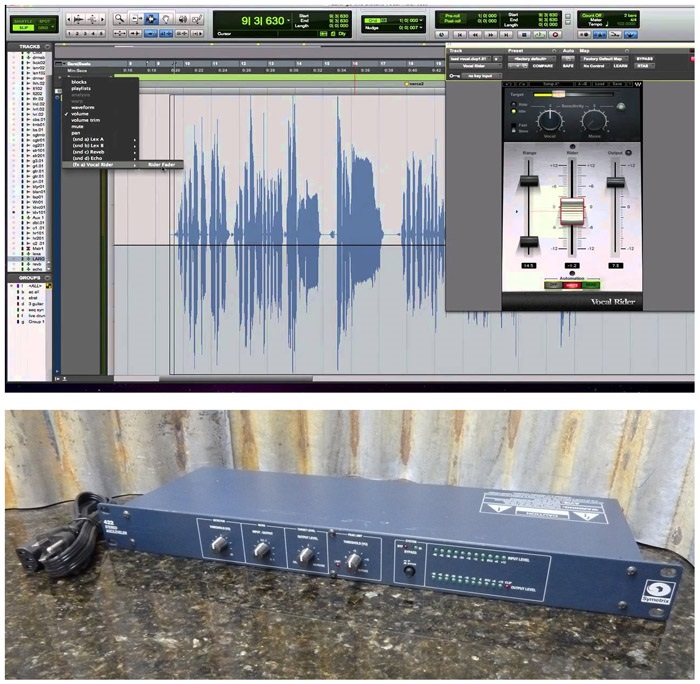
Keeping It Smooth
Musical acts are a bit more challenging. One of the biggest noise issues is stage amplifiers that hiss, buzz and/or hum. These noises might not be too bad live but on a recorded webcast they can be very apparent.
The buzz and hum are indicators of a grounding issue. My first move is to make sure the amplifier has a ground pin still on the plug, or that it’s not plugged into an extension cord that’s missing the ground.
Also check any ground switches on the unit. If these measures don’t solve the problem, I plug the amp into a different outlet (even if it’s offstage).
Another thing that can help is changing the location of the amp’s mic, moving it farther away from the loudspeaker (the audible source of the noise).
Musical acts can also have a wide variety of dynamic levels. Compression and limiting can help keep instrument and vocal volume levels in check for the webcast mix.
For the main outputs I deploy a leveler – while compressors and limiters work great at keeping things from getting too loud, they can’t compensate for things that are too soft. A leveler allows setting a target window for the audio, compressing loud sounds and raising the gain of soft signals to keep the overall signal in the target range.

Some consoles offer leveling or accept leveling plugins, and there are also hardware models available, including the “old” Symetrix 422 stereo AGC leveler that I use. Inconsistent volume levels can frustrate the listener, causing them to constantly turn up or down the volume and resulting in a mediocre listening experience. Most if not all broadcast stations employ leveling, and that professional sound is what we strive to achieve.
Checking It Out
Unless there’s a separate audio mix system for the web feeds, it’s a good idea to place isolation transformers between the sound system and the computer(s). While there may be no noise issues at sound check, they have a bad habit of suddenly appearing before show time, so the isolation will help keep the signal clean without demanding your attention when other issues are more pressing.
The next stop in the signal chain is the front end of the computer. There are a lot of audio interfaces on the market today that sound great. I have several Focusrite Scarlett interfaces that work well and allow some basic metering and monitoring capability.
Monitoring the mix is very important because you want to hear how it sounds to the average listener, who will probably be using a laptop or desktop with small loudspeakers or a portable device like a phone or tablet with earbuds or headphones. While I may mix using good headphones or quality monitor loudspeakers, I monitor my feeds with a set of cheap earbuds as well as a laptop – using the built-in loudspeakers – so I can get an idea of what things will sound like on the user’s end.
With a little extra attention to details and an understanding of what the audio sounds like over small, low-fidelity loudspeakers, it’s a pretty straightforward matter to deliver professional sounding podcast and webcast sound.
